Appx_A_ Instrument_post Pilot_7_1_22_clean
Analyzing Consumers’ Value of ‘‘Product of USA’’ Labeling Claims
Appx_A_ Instrument_post Pilot_7_1_22_clean
OMB: 0583-0186
Appendix A
Instrument for “Product of USA” Web-Based Survey/Experiment
English
Version
OMB Control Number:
0583-0186 |
[DISPLAY 1]
RTI International is conducting this survey with funding from the U.S. Department of Agriculture (USDA). For this survey, you will answer questions about grocery shopping and cooking. Your participation in this study is completely voluntary. All your answers will be kept private. In our experience, answering the survey questions involves no more risk of harm than you would experience in everyday life.
If you have any questions about the study, you may contact Jenna Brophy of RTI at 1‑800‑334‑8571, extension 28881 or by email at [email protected]. If you have any questions about your rights as a study participant, you may contact RTI’s Office of Research Protection at 1-866-214-2043 or by email at [email protected].
[DISPLAY 2]
According to the Paperwork Reduction Act of 1995, an agency may not conduct or sponsor, and a person is not required to respond to, a collection of information unless it displays a valid Office of Management and Budget (OMB) control number. The valid OMB control number for this information collection is 0583-0186, and the expiration date is 06/30/2025. The time required to complete this information collection is estimated to average 20 minutes per response, including the time for reviewing instructions, searching existing data sources, gathering and maintaining the data needed, and completing and reviewing the collection of information.
[SP]
[Prompt if Refused]
[DISPLAY 3]
The first set of questions asks about grocery shopping and cooking.
[SP]
[Prompt if Refused]
S2.1 When it comes to grocery shopping in your household (at a store or online), would you say …?
You do all of it
You do most of it
You do about half of it
Someone else does most of it; you do some of it (TERMINATE)
Someone else does all of it (TERMINATE)
[Terminate if S2 = 4, 5, or refused]
[SP FOR EACH ROW; randomize order]
[Prompt if Refused]
S3. For each of the following products, select Yes or No to indicate whether you purchased it from the grocery store/butcher or online within the past 6 months. Do not include prepackaged meal kits that provide the recipes and ingredients to prepare at home.
|
Yes, purchased (1) |
No, did NOT purchase (0) |
Beef |
|
|
Pork |
|
|
Chicken |
|
|
Turkey |
|
|
Fish |
|
|
Shellfish |
|
|
[Terminate if S3 = 0 or refused for both beef AND pork]
[MP]
D1. Which of the following items do you have in your kitchen? Select all that apply.
1. Can opener
2. Food thermometer
3. Turkey baster
4. Potato peeler
5. Spatula
6. Garlic press
7. None of the above [EXCLUSIVE]
[SP]
D2. When cooking a food product at home for the first time, how often do you read the cooking instructions on the package before you start cooking?
1. Never
2. Rarely
3. Sometimes
4. Most of the time
5. Always
Limited Time Exposure (LTE) Experiment
Practice LTE
[DISPLAY 4]
For the next question, assume you are at the grocery store/butcher or shopping online, and you are going to buy a package of frozen chicken tenders. On the next screen, we are going to show you a package of chicken tenders. You will see the product for 20 seconds. Please carefully review the information on the product package because we are going to ask you a few questions about what you saw.
[DISPLAY FOOD PACKAGE LTE_practice.jpg]—20 seconds
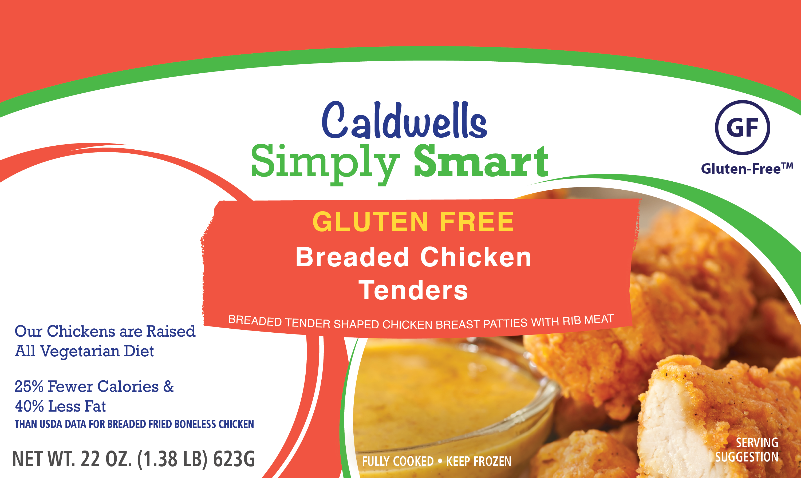
[Do not allow respondent to go back in survey]
[TEXT; code each row as separate variable; 5 visible rows, add up to 3 sets]
L1. Please list everything you remember seeing on the food package. Please type each thing you remember seeing, such as words, pictures, and symbols, on a SEPARATE row. For pictures or symbols, please provide a description of what you saw.
Click the MORE button to add more rows. Take as much time as you need. Click the “>>” button when done.
MORE
button [ADD SAME NUMBER OF ROWS SHOWN ON PREVIOUS SCREEN]
[DISPLAY 4a]
Now we are going to ask you if you remember seeing different words, pictures, or symbols on the product package. Only click YES if you are sure you saw the words, pictures, or symbols; otherwise, click NO.
[RANDOMIZE ORDER OF L2–L5; 2 hits and 2 misses]
[SP]
L2. Do you remember seeing “All Vegetarian Diet”?
1. Yes
0. No
[SP]
L3. Do you remember seeing this image?

1. Yes
0. No
[SP]
L4. Do you remember seeing “Do Not Microwave”?
1. Yes
0. No
[SP]
L5. Do you remember seeing this image?
![]()
1. Yes
0. No
[DISPLAY 5]
LTE
For the next question, assume you are at the grocery store/butcher or shopping online, and you are going to buy a package of ground beef.
On the next screen, we are going to show you a package of ground beef. You will see the package for 20 seconds. Please carefully review the information on the product package because we are going to ask you a few questions about what you saw.
[RANDOM ASSIGNMENT TO 1 OF 4 CONDITIONS; LTE_P-USA_X.jpg]—20 seconds
NOTE: 1 = control, 2 = icon, 3 = border, 4 = plain text
[Do not allow respondent to go back in survey]
Version 1 = control Version 2 = icon
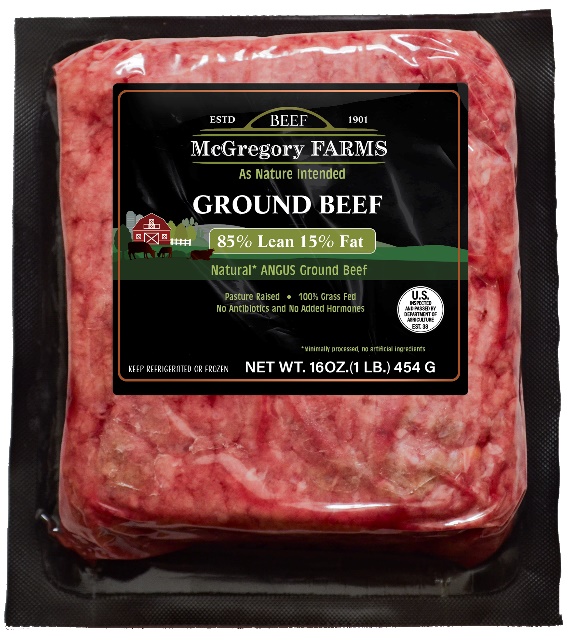
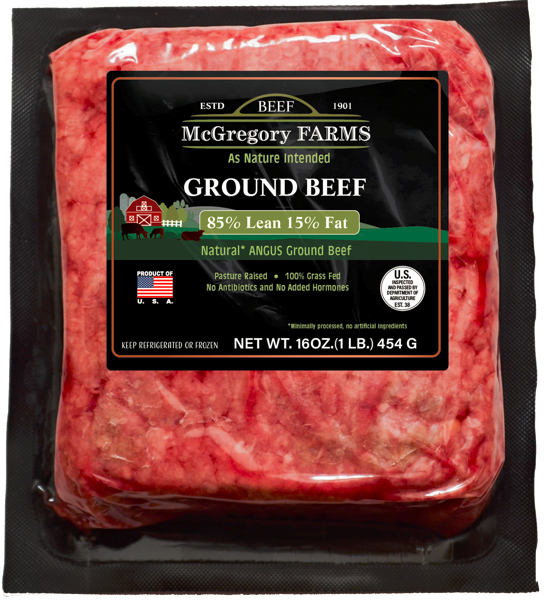
Version 3 = border Version 4 = plain text


[TEXT—code each row as separate variable; 5 visible rows, add up to 3 sets]
L6. Please list everything you remember seeing on the food package. Please type each thing you remember seeing, such as words, pictures, and symbols, on a SEPARATE row. For pictures or symbols, please provide a description of what you saw.
Click the MORE button to add more rows. Take as much time as you need. Click the “>>” button when done.
MORE
button [ADD SAME NUMBER OF ROWS SHOWN ON PREVIOUS SCREEN]
[DISPLAY 5a]
Now we are going to ask you if you remember seeing different words, pictures, or symbols on the product package. Only click YES if you are sure you saw the word, picture, or symbol; otherwise, click NO.
[RANDOMIZE ORDER OF L7/L7A–L14A/B; 4 hits and 4 misses]
[IF LTE CONDITION = 4 (TREATMENT—P-USA is TEXT ONLY) DISPLAY L7A; OTHERWISE, DISPLAY 7]
[Prompt if Refused]
[SP] (HIT 1)
L7A. Do you remember seeing “Product of USA”?
1. Yes
[Prompt if Refused]
[SP] (HIT 1; MISS FOR CONTROL GROUP)
L7. Do you remember seeing this image?
“[INSERT PUSA_Flag.jpg for LTE CONDITION 1 and LTE CONDITION V2, INSERT PUSA Border.jpg for LTE CONDITION 3]
1. Yes
0. No
Note: The image for Condition 2 (flag icon) is shown.
[SP] (HIT 2—ON THE LABEL)
L8. Do you remember seeing “No Antibiotics and No Added Hormones”?
1. Yes
0. No
L9. Do you remember seeing this image?
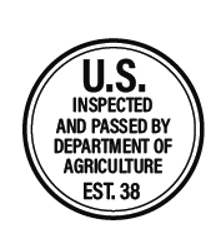
1. Yes
0. No
L10. Do you remember seeing “100% Grass Fed”?
1. Yes
0. No
[SP] (MISS 1—NOT ON THE LABEL)
L11. Do you remember seeing “Sustainably Raised”?
1. Yes
0. No
[SP] (MISS 2)
L12. Do you remember seeing “Eco Friendly”?
1. Yes
0. No
[SP] (MISS 3)
L13. Do you remember seeing this image?
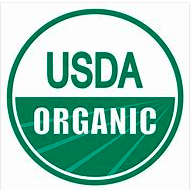
1. Yes
0. No
[IF LTE CONDITION = 1 (CONTROL), DISPLAY L14A; OTHERWISE, DISPLAY 14B]
[SP] (HIT 4—CONTROL GROUP)
L14A. Do you remember seeing this image?
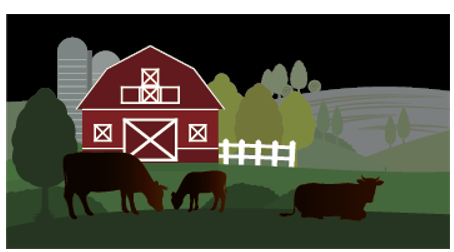
1. Yes
0. No
[SP] (MISS 4—TREATMENT GROUP)
L14B. Do you remember seeing this image?
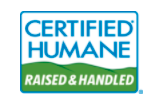
1. Yes
0. No
Questions on Consumer Understanding and Confusion
[DISPLAY 6]
Please answer the next questions that ask about labeling claims and other information that may be on meat (beef or pork) products based on your current knowledge. Labeling claims provide information to consumers when they are trying to decide whether to buy a product. Meat producers can put labeling claims on their products if they meet certain requirements. For example, for a meat product to be labeled as “organic,” it must be produced through approved methods.
[Prompt if Refused]
[SP, randomize response options]
K1.
To your knowledge, what does the “Product of USA”
labeling claim on meat products mean?
For the answer
choices below, a meat product “processed in the USA”
means the meat was packaged in the USA or cut/ground (for example,
into pork chops or hamburger) and then packaged in the USA.
The product must be made from animals born, raised, and slaughtered and the meat then processed in the USA.
The product must be made from animals raised and slaughtered and the meat then processed in the USA; the animals can be born in another country.
The product must be made from animals slaughtered and the meat then processed in the USA; the animals can be born and raised in another country.
The product must be processed in the USA; the animals can be born, raised, and slaughtered in another country. [Correct response]
[SP, randomize response options]
K2. To your knowledge, what does the “Natural” labeling claim on meat products mean?
The product must be made from meat with no added colors or artificial ingredients and made in a way that does not change the meat itself (i.e., minimally processed). [Correct response]
The animals used to make the product were never given antibiotics throughout their lifetimes.
The animals used to make the product were never given synthetic or artificial hormones throughout their lifetimes.
Not sure/don’t know
[MP, randomize response options]
K3. To your knowledge, what does “USDA Choice” on beef products mean? Select all that apply.
The beef was evaluated (graded) and is considered high-quality beef for tenderness, juiciness, and flavor. [Correct response]
The cows used to produce the beef were treated humanely from birth to slaughter on farms that provide suitable living conditions that meet the animals’ needs.
The beef does not contain any bacteria (e.g., Salmonella) that can cause foodborne illness.
The beef is a product of the USA.
Not sure/don’t know
[MP , randomize response options]
K4. Please look at this symbol.

To
your knowledge, what does this symbol on meat products mean? Select
all that apply.
The meat was produced under federal inspection of the U.S. Department of Agriculture (USDA). [Correct response]
The animals used to produce the meat were treated humanely from birth to slaughter on farms that provide suitable living conditions that meet the animals’ needs.
The meat does not contain any bacteria (e.g., Salmonella) that can cause foodborne illness.
The meat is a product of the USA.
Not sure/don’t know
Discrete Choice Experiment (DCE) – Random assignment to Version 1-6
DCE 1: Ground Beef—P-USA with No Definition vs. No P-USA
[DISPLAY 8]
For the next part of the survey, imagine you are visiting a grocery store/butcher or shopping online to buy ground beef. In the next set of questions, we will ask you to consider two ground beef products. These packages of ground beef will differ based on the features described on the next screen.
Please take a few minutes to read this information carefully. You can go back to it if you need to by clicking the Review Product Information button. [DISPLAY “Review Product Information” BUTTON FOR EACH CHOICE QUESTION]
[DISPLAY 9]
Price/pound: Dollars per 1 pound of ground beef. These prices typically range from $3.89 to $5.69.
Labeling claims: The U.S. government reviews labeling claims producers make about their product. For example, if a producer claims that it is selling grass fed beef, the producer must show the government its products are produced from cattle mostly fed grass over their life. The survey asks about the following claims:
Grass-fed: Made from cattle mostly fed grass over their life.
Free from antibiotics: Made from cattle that were never given antibiotics during their lifetime.
Product of USA: The ground beef was packaged in the USA or ground and then packaged in the USA. The cattle used to make the ground beef can come from another country or countries.
[DISPLAY 12]
It is important that we get accurate results to the survey. In prior surveys, some respondents did not consider their answers to these questions carefully. For example, in one survey, most respondents said they would buy a new product. However, when a grocery store stocked the product, only about half actually bought the new product when they had to pay for it with their own money. This can lead to misleading survey results. So, it is important that you make each of your upcoming choices like you would if you were actually making these exact choices in a grocery store/butcher or online.
Practice DCE
[DISPLAY 12A]
To start, consider Product A and Product B. Please assume they are the brand that you usually buy. Both products are packages of USDA-inspected 85% lean/15% fat ground beef sold by the pound and have the same weight and expiration (sell-by) date and the same general appearance. The products are the same except for the labeling features shown on the next screen. Please carefully consider each product.
[DISPLAY 12B]
Product Features |
Product A |
Product B |
Grass fed |
No |
No |
Free from antibiotics |
Yes |
Yes |
Product of USA |
Yes |
Yes |
Price/pound |
$3.89 |
$5.69 |
[SP]
[Prompt if Refused]
DCE_P. Given these two options, which package of ground beef would you buy?
Product A
Product B
Neither
[If DCE_P = Product A, then display]
[DISPLAY 13A]
In this question, each product was exactly the same except Product A cost less than Product B. You chose Product A, the option that cost less.
In the following questions, products will differ in more than one way. Please look very carefully at each product and consider which option you would actually buy as if you were making the purchases using your own money.
[If DCE_P = Neither or Product B]
DCE_N. Why did you choose [Pipe in answer: Product B/Neither] as your response?
[TEXT BOX]
[If DCE_P = Product B, then display]
[DISPLAY 13B]
Please read these questions carefully. In this question, each product was exactly the same except Product A cost less than Product B. However, you chose Product B, the option that cost more.
In the following questions, products will differ in more than one way. Please look very carefully at each product and consider which option you would actually buy as if you were making the purchases using your own money.
[If DCE_P = Neither]
Please look very carefully at each product and consider which option you would actually buy as if you were making the purchases using your own money.
DCE Questions
DCE_1 through DCE_9 [Programming note: Each respondent will see nine DCE questions according to an experimental design. Each question will resemble the question below. Following DCE best practices, the order of attributes will be randomized.]
[Prompt if Refused for DCE1]
Product Features |
Product A |
Product B |
Price/pound |
|
|
Free from antibiotics |
|
|
Grass fed |
|
|
Product of USA |
|
|
Given these two options, which package of ground beef would you buy?
Product A
Product B
Neither
DCE_14_FC [All respondents will see the same fixed-choice DCE question.]
[Prompt if Refused]
Product Features |
Product A |
Product B |
Price/pound |
$3.89 |
$3.89 |
Free from antibiotics |
Yes |
Yes |
Grass fed |
Yes |
Yes |
Product of USA |
Yes |
No |
Given these two options, which package of ground beef would you buy?
Product A
Product B
Neither
[DISPLAY 14]
The next questions ask about how important the different features of ground beef are to you. Please think about how you made your decision to choose either Product A, Product B, or neither product for the questions you just answered.
[SP, randomize response options]
[Prompt if Refused]
DCE_15a. When making your choices, which feature of ground beef was most important when deciding which product to buy?
Grass-fed cattle
Free from antibiotics
Product of USA
Price
[SP]
DCE_15b. Which feature of ground beef was second most important when deciding which product to buy? (Note: Response that was first most important will not be shown.)
Grass-fed cattle
Free from antibiotics
Product of USA
Price
[SP]
DCE_15c. Which feature of ground beef was third most important when deciding which product to buy? (Note: Responses that were first and second most important will not be shown.)
Grass-fed cattle
Free from antibiotics
Product of USA
Price
[SP FOR EACH ROW; RANDOMIZE ORDER]
DCE_16. When grocery shopping (at a store or online), how often do you look for the following labeling claims when buying ground beef?
Variable Name |
Labeling Claim |
Never Seen the Claim |
Never |
Rarely |
Sometimes |
Most of the Time |
Always |
DCE_16a |
Grass-fed cattle |
|
|
|
|
|
|
DCE_16b |
Free from antibiotics |
|
|
|
|
|
|
DCE_16c |
Product of USA |
|
|
|
|
|
|
DCE 2: Ground Beef—Current Definition vs. Three Alternative Definitions
[DISPLAY 8]
For the next part of the survey, imagine you are visiting a grocery store/butcher or shopping online to buy ground beef. In the next set of questions, we will ask you to consider two ground beef products. These packages of ground beef will differ based on the features described on the next screen.
Please take a few minutes to read this information carefully. You can go back to it if you need to by clicking the Review Product Information button. [DISPLAY “Review Product Information” BUTTON FOR EACH CHOICE QUESTION]
[DISPLAY 9]
Price/pound: Dollars per 1 pound of ground beef. These prices typically range from $3.89 to $5.69.
Labeling claims: The U.S. government reviews labeling claims producers make about their product. For example, if a producer claims that it is selling grass fed beef, the producer must show the government its products are produced from cattle mostly fed grass over their life. The survey asks about the following claims:
Grass-fed: Made from cattle mostly fed grass over their life.
Free from antibiotics: Made from cattle that were never given antibiotics during their lifetime.
[DISPLAY 10]
Location produced: The beef in a package of ground beef can come from the USA, from another country or countries, or from both depending on where each step of the production process of the beef takes place. As shown in the figure below, the main production locations are (1) where the cattle were born, (2) where the cattle were raised, (3) where the cattle were slaughtered, and (4) where the meat was processed (packaged or ground and then packaged). Cattle can be transported to a different location to be raised, slaughtered, and/or processed.
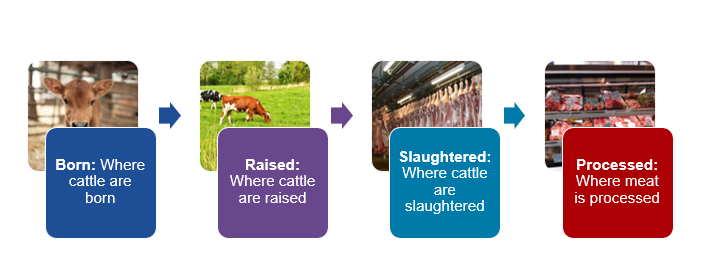
[DISPLAY
11]
For this survey, please consider four possible options for where the ground beef was produced as described below. If a production stage is not stated, it means the animals could come from the USA or another country or countries.
“Processed in the USA” means the ground beef was packaged in the USA or ground and then packaged in the USA.
The ground beef was processed in the USA.
The ground beef was made from cattle that were slaughtered and the meat then processed all within the USA.
The ground beef was made from cattle that were raised and slaughtered and the meat then processed all within the USA.
The ground beef was made from cattle that were born, raised, and slaughtered and the meat then processed all within the USA.
[DISPLAY 12]
It is important that we get accurate results to this survey. In prior surveys, some respondents did not consider their answers to these questions carefully. For example, in one survey, most respondents said they would buy a new product. However, when a grocery store stocked the product, only about half actually bought the new product when they had to pay for it with their own money. This can lead to misleading survey results. So, it is important that you make each of your upcoming choices like you would if you were actually making these exact choices in a grocery store/butcher or online.
Practice DCE
[DISPLAY 12A]
To start, consider Product A and Product B. Please assume they are the brand that you usually buy. Both products are packages of USDA-inspected 85% lean/15% fat ground beef sold by the pound and have the same weight and expiration (sell-by) date and the same general appearance. The products are the same except for the labeling features shown on the next screen. Please carefully consider each product.
[DISPLAY 12B]
Product Features |
Product A |
Product B |
Grass fed |
No |
No |
Free from antibiotics |
Yes |
Yes |
Location produced |
In the USA
|
In the USA
|
Price/pound |
$3.89 |
$5.69 |
[SP]
[Prompt if Refused]
DCE_P. Given these two options, which package of ground beef would you buy?
Product A
Product B
Neither
[If DCE_P = Product A, then display]
[DISPLAY 13A]
In this question, each product was exactly the same except Product A cost less than Product B. You chose Product A, the option that cost less.
In the following questions, products will differ in more than one way. Please look very carefully at each product and consider which option you would actually buy as if you were making the purchases using your own money.
[If DCE_P = Neither or Product B]
DCE_N. Why did you choose [Pipe in answer: Product B/Neither] as your response?
[TEXT BOX]
[If DCE_P = Product B, then display]
[DISPLAY 13B]
Please read these questions carefully. In this question, each product was exactly the same except Product A cost less than Product B. However, you chose Product B, the option that cost more.
In the following questions, products will differ in more than one way. Please look very carefully at each product and consider which option you would actually buy as if you were making the purchases using your own money.
[If DCE_P = Neither]
Please look very carefully at each product and consider which option you would actually buy as if you were making the purchases using your own money.
DCE Questions
DCE_1 through DCE_9 [Programming note: Each respondent will see nine DCE questions according to an experimental design. Each question will resemble the question below. Following DCE best practices, the order of attributes in the DCE question will be randomized.]
[Prompt if Refused for DCE1]
Product Features |
Product A |
Product B |
Price/pound |
|
|
Free from antibiotics |
|
|
Grass fed |
|
|
Location produced |
|
|
Given these two options, which package of ground beef would you buy?
Product A
Product B
Neither
[DISPLAY 14]
The
next questions ask about how important the different features of
ground beef are to you. Please think about how you made your decision
to choose either Product A, Product B, or neither product for the
questions you just answered.
[SP, randomize response options]
[Prompt if Refused]
DCE_15a. When making your choices, which feature of ground beef was most important to you when deciding which product to buy?
Grass-fed cattle
Free from antibiotics
Location produced
Price
[SP]
DCE_15b. Which feature of ground beef was second most important when deciding which product to buy? (Note: Response that was first most important will not be shown.)
Grass-fed cattle
Free from antibiotics
Location produced
Price
[SP]
DCE_15c. Which feature of ground beef was third most important when deciding which product to buy? (Note: Responses that were first and second most important will not be shown.)
Grass-fed cattle
Free from antibiotics
Location produced
Price
[SP for each row; RANDOMIZE ORDER]
DCE_16. When grocery shopping (at a store or online), how often do you look for the following labeling claims when buying ground beef?
Format using slider
Variable Name |
Labeling Claim |
Never Seen the Claim |
Never |
Rarely |
Sometimes |
Most of the Time |
Always |
DCE_16a |
Grass-fed cattle |
|
|
|
|
|
|
DCE_16b |
Free from antibiotics |
|
|
|
|
|
|
DCE_16c |
Product of USA |
|
|
|
|
|
|
DCE 3: Steak—P-USA with No Definition vs. No P-USA
[DISPLAY 8]
For the next part of the survey, imagine you are visiting a grocery store/butcher or shopping online to buy steak. In the next set of questions, we will ask you to consider two steak products. These packages of steak will differ based on the features described on the next screen.
Please take a few minutes to read this information carefully. You can go back to it if you need to by clicking the Review Product Information button. [DISPLAY “Review Product Information” BUTTON FOR EACH CHOICE QUESTION]
[DISPLAY 9]
Price/pound: Dollars per 1 pound of steak. These prices typically range from $8.09 to $12.19.
Labeling claims: The U.S. government reviews labeling claims producers make about their product. For example, if a producer claims that it is selling grass fed beef, the producer must show the government its products are produced from cattle mostly fed grass over their life. The survey asks about the following claims:
Grass-fed: Made from cattle mostly fed grass over their life.
Free from antibiotics: Made from cattle that were never given antibiotics during their lifetime.
Product of USA: The steak was packaged in the USA or the meat cut and then packaged in the USA. The cattle used to make the steak can come from another country or countries.
[DISPLAY 12]
It is important that we get accurate results to the survey. In prior surveys, some respondents did not consider their answers to these questions carefully. For example, in one survey, most respondents said they would buy a new product. However, when a grocery store stocked the product, only about half actually bought the new product when they had to pay for it with their own money. This can lead to misleading survey results. So, it is important that you make each of your upcoming choices like you would if you were actually making these exact choices in a grocery store/butcher or online.
Practice DCE
[DISPLAY 12A]
To start, consider Product A and Product B. Please assume they are the brand that you usually buy. Both products are packages of USDA-inspected Choice NY strip steak sold by the pound and have the same weight and expiration (sell-by) date and the same general appearance. The products are the same except for the labeling features shown on the next screen. Please carefully consider each product.
[DISPLAY 12B]
Product Features |
Product A |
Product B |
Grass fed |
No |
No |
Free from antibiotics |
Yes |
Yes |
Product of USA |
Yes |
Yes |
Price/pound |
$8.09 |
$12.19 |
[SP]
[Prompt if Refused]
DCE_P. Given these two options, which package of steak would you buy?
Product A
Product B
Neither
[If DCE_P = Product A, then display]
[DISPLAY 13A]
In this question, each product was exactly the same except Product A cost less than Product B. You chose Product A, the option that cost less.
In the following questions, products will differ in more than one way. Please look very carefully at each product and consider which option you would actually buy as if you were making the purchases using your own money.
[If DCE_P = Neither or Product B]
DCE_N. Why did you choose [Pipe in answer: Product B/Neither] as your response?
[TEXT BOX]
[If DCE_P = Product B, then display]
[DISPLAY 13B]
Please read these questions carefully. In this question, each product was exactly the same except Product A cost less than Product B. However, you chose Product B, the option that cost more.
In the following questions, products will differ in more than one way. Please look very carefully at each product and consider which option you would actually buy as if you were making the purchases using your own money.
[If DCE_P = Neither]
Please look very carefully at each product and consider which option you would actually buy as if you were making the purchases using your own money.
DCE Questions
DCE_1 through DCE_9 [Programming note: Each respondent will see nine DCE questions according to an experimental design. Each question will resemble the question below. Following DCE best practices, the order of attributes will be randomized.]
[Prompt if Refused for DCE1]
Product Features |
Product A |
Product B |
Price/pound |
|
|
Free from antibiotics |
|
|
Grass fed |
|
|
Product of USA |
|
|
Given these two options, which package of steak would you buy?
Product A
Product B
Neither
DCE_14_FC [All respondents will see the same fixed-choice DCE question]
[Prompt if Refused]
Product Features |
Product A |
Product B |
Price/pound |
$8.09 |
$8.09 |
Free from antibiotics |
Yes |
Yes |
Grass fed |
Yes |
Yes |
Product of USA |
Yes |
No |
Given these two options, which package of steak would you buy?
Product A
Product B
Neither
[DISPLAY 14]
The next questions ask about how important the different features of steak are to you. Please think about how you made your decision to choose either Product A, Product B, or neither product for the questions you just answered.
[SP, randomize response options]
[Prompt if Refused]
DCE_15a. When making your choices, which feature of steak was most important when deciding which product to buy?
Grass-fed cattle
Free from antibiotics
Product of USA
Price
[SP]
DCE_15b. Which feature of steak was second most important when deciding which product to buy? (Note: Response that was first most important will not be shown.)
Grass-fed cattle
Free from antibiotics
Product of USA
Price
[SP]
DCE_15c. Which feature of steak was third most important when deciding which product to buy? (Note: Responses that were first and second most important will not be shown.)
Grass-fed cattle
Free from antibiotics
Product of USA
Price
[SP FOR EACH ROW; RANDOMIZE ORDER]
DCE_16. When grocery shopping (at a store or online), how often do you look for the following labeling claims when buying steak?
Format using slider
Variable Name |
Labeling Claim |
Never Seen the Claim |
Never |
Rarely |
Sometimes |
Most of the Time |
Always |
DCE_16a |
Grass-fed cattle |
|
|
|
|
|
|
DCE_16b |
Free from antibiotics |
|
|
|
|
|
|
DCE_16c |
Product of USA |
|
|
|
|
|
|
DCE 4: Steak—Current Definition vs. Three Alternative Definitions
[DISPLAY 8]
For the next part of the survey, imagine you are visiting a grocery store/butcher or shopping online to buy steak. In the next set of questions, we will ask you to consider two steak products. These packages of steak will differ based on the features described on the next screen.
Please take a few minutes to read this information carefully. You can go back to it if you need to by clicking the Review Product Information button. [DISPLAY “Review Product Information” BUTTON FOR EACH CHOICE QUESTION]
[DISPLAY 9]
Price/pound: Dollars per 1 pound of steak. These prices typically range from $8.09 to $12.19.
Labeling claims: The U.S. government reviews labeling claims producers make about their product. For example, if a producer claims that it is selling grass fed beef, the producer must show the government its products are produced from cattle mostly fed grass over their life. The survey asks about the following claims:
Grass-fed: Made from cattle mostly fed grass over their life.
Free from antibiotics: Made from cattle that were never given antibiotics during their lifetime.
[DISPLAY 10]
Location produced: The beef used to make the steak can come from the USA, from another country or countries, or from both depending on where each step of the production process of the beef takes place. As shown in the figure below, the main production locations are (1) where the cattle were born, (2) where the cattle were raised, (3) where the cattle were slaughtered, and (4) where the meat was processed (packaged or cut and then packaged). Cattle can be transported to a different location to be raised, slaughtered, and/or processed.

[DISPLAY 11]
For this survey, please consider four possible options for where the steak was produced as described below. If a production stage is not stated, it means the animals could come from the USA or another country or countries.
“Processed in the USA” means the steak was packaged in the USA or cut and then packaged in the USA.
The steak was processed in the USA.
The steak was made from cattle that were slaughtered and the meat then processed all within the USA.
The steak was made from cattle that were raised and slaughtered and the meat then processed all within the USA.
The steak was made from cattle that were born, raised, and slaughtered and the meat then processed all within the USA.
[DISPLAY 12]
It is important that we get accurate results to this survey. In prior surveys, some respondents did not consider their answers to these questions carefully. For example, in one survey, most respondents said they would buy a new product. However, when a grocery store stocked the product, only about half actually bought the new product when they had to pay for it with their own money. This can lead to misleading survey results. So, it is important that you make each of your upcoming choices like you would if you were actually making these exact choices in a grocery store/butcher or online.
Practice DCE
[DISPLAY 12A]
To start, consider Product A and Product B. Please assume they are the brand that you usually buy. Both products are packages of USDA-inspected Choice NY strip steak sold by the pound and have the same weight and expiration (sell-by) date and the same general appearance. The products are the same except for the labeling features shown on the next screen. Please carefully consider each product.
[DISPLAY 12B]
Product Features |
Product A |
Product B |
Grass fed |
No |
No |
Free from antibiotics |
Yes |
Yes |
Location produced |
In the USA
|
In the USA
|
Price/pound |
$8.09 |
$12.19 |
[SP]
[Prompt if Refused]
DCE_P. Given these two options, which package of steak would you buy?
Product A
Product B
Neither
[If DCE_P = Product A, then display]
[DISPLAY 13A]
In this question, each product was exactly the same except Product A cost less than Product B. You chose Product A, the option that cost less.
In the following questions, products will differ in more than one way. Please look very carefully at each product and consider which option you would actually buy as if you were making the purchases using your own money.
[If DCE_P = Neither or Product B]
DCE_N. Why did you choose [Pipe in answer: Product B/Neither] as your response?
[TEXT BOX]
[If DCE_P = Product B, then display]
[DISPLAY 13B]
Please read these questions carefully. In this question, each product was exactly the same except Product A cost less than Product B. However, you chose Product B, the option that cost more.
In the following questions, products will differ in more than one way. Please look very carefully at each product and consider which option you would actually buy as if you were making the purchases using your own money.
[If DCE_P = Neither]
Please look very carefully at each product and consider which option you would actually buy as if you were making the purchases using your own money.
DCE Questions
DCE_1 through DCE_9 [Programming note: Each respondent will see nine DCE questions according to an experimental design. Each question will resemble the question below. Following DCE best practices, the order of attributes in the DCE question will be randomized.]
[Prompt if Refused for DCE1]
Product Features |
Product A |
Product B |
Price/pound |
|
|
Free from antibiotics |
|
|
Grass fed |
|
|
Location produced |
|
|
Given these two options, which package of steak would you buy?
Product A
Product B
Neither
[DISPLAY 14]
The next questions ask about how important the different features of steak are to you. Please think about how you made your decision to choose either Product A, Product B, or neither product for the questions you just answered.
[SP, randomize response options]
[Prompt if Refused]
DCE_15a. When making your choices, which feature of steak was most important to you when deciding which product to buy?
Grass-fed cattle
Free from antibiotics
Location produced
Price
[SP]
DCE_15b. Which feature of steak was second most important when deciding which product to buy? (Note: Response that was first most important will not be shown.)
Grass-fed cattle
Free from antibiotics
Location produced
Price
[SP]
DCE_15c. Which feature of steak was third most important when deciding which product to buy? (Note: Responses that were first and second most important will not be shown.)
Grass-fed cattle
Free from antibiotics
Location produced
Price
[SP for each row; RANDOMIZE ORDER]
DCE_16. When grocery shopping (at a store or online), how often do you look for the following labeling claims when buying steak?
Format using slider
Variable Name |
Labeling Claim |
Never Seen the Claim |
Never |
Rarely |
Sometimes |
Most of the Time |
Always |
DCE_16a |
Grass-fed cattle |
|
|
|
|
|
|
DCE_16b |
Free from antibiotics |
|
|
|
|
|
|
DCE_16c |
Product of USA |
|
|
|
|
|
|
DCE 5: Pork Tenderloin—P-USA with No Definition vs. No P-USA
[DISPLAY 8]
For the next part of the survey, imagine you are visiting a grocery store/butcher or shopping online to buy pork tenderloin. In the next set of questions, we will ask you to consider two pork tenderloin products. These packages of pork tenderloin will differ based on the features described on the next screen.
Please take a few minutes to read this information carefully. You can go back to it if you need to by clicking the Review Product Information button. [DISPLAY “Review Product Information” BUTTON FOR EACH CHOICE QUESTION]
[DISPLAY 9]
Price/pound: Dollars per 1 pound of pork tenderloin. These prices typically range from $2.89 to $5.19.
Labeling claims: The U.S. government reviews labeling claims producers make about their product. For example, if a producer claims that it is selling pork free from added hormones, the producer must show the government that its products are produced without added hormones. The survey asks about the following claims:
Free from added hormones: Made from hogs that were never given artificial hormones during their lifetime.
Lean: The product contains limited amounts of fat, saturated fat, and cholesterol.
Product of USA: The pork tenderloin was packaged in the USA or the meat cut and then packaged in the USA. The hogs used to make the pork tenderloin can come from another country or countries.
[DISPLAY 12]
It is important that we get accurate results to the survey. In prior surveys, some respondents did not consider their answers to these questions carefully. For example, in one survey, most respondents said they would buy a new product. However, when a grocery store stocked the product, only about half actually bought the new product when they had to pay for it with their own money. This can lead to misleading survey results. So, it is important that you make each of your upcoming choices like you would if you were actually making these exact choices in a grocery store/butcher or online.
Practice DCE
[DISPLAY 12A]
To start, consider Product A and Product B. Please assume they are the brand that you usually buy. Both products are packages of USDA-inspected pork tenderloin that are not in a marinade and have the same weight and expiration (sell-by) date and the same general appearance. The products are the same except for the labeling features shown on the next screen. Please carefully consider each product.
[DISPLAY 12B]
Product Features |
Product A |
Product B |
Price/pound |
$2.89 |
$5.19 |
Free from added hormones |
No |
No |
Lean |
Yes |
Yes |
Product of USA |
No |
No |
[SP]
[Prompt if Refused]
DCE_P. Given these two options, which package of pork tenderloin would you buy?
Product A
Product B
Neither
[If DCE_P = Product A, then display]
[DISPLAY 13A]
In this question, each product was exactly the same except Product A cost less than Product B. You chose Product A, the option that cost less.
In the following questions, products will differ in more than one way. Please look very carefully at each product and consider which option you would actually buy as if you were making the purchases using your own money.
[If DCE_P = Neither or Product B]
DCE_N. Why did you choose [Pipe in answer: Product B/Neither] as your response?
[TEXT BOX]
[If DCE_P = Product B, then display]
[DISPLAY 13B]
Please read these questions carefully. In this question, each product was exactly the same except Product A cost less than Product B. However, you chose Product B, the option that cost more.
In the following questions, products will differ in more than one way. Please look very carefully at each product and consider which option you would actually buy as if you were making the purchases using your own money.
[If DCE_P = Neither]
Please look very carefully at each product and consider which option you would actually buy as if you were making the purchases using your own money.
DCE Questions
DCE_1 through DCE_9 [Programming note: Each respondent will see nine DCE questions according to an experimental design. Each question will resemble the question below. Following DCE best practices, the order of attributes will be randomized.]
[Prompt if Refused for DCE1]
Product Features |
Product A |
Product B |
Price/pound |
|
|
Free from added hormones |
|
|
Lean |
|
|
Product of USA |
|
|
Given these two options, which package of pork tenderloin would you buy?
Product A
Product B
Neither
DCE_14_FC [All respondents will see the same fixed-choice DCE question]
[Prompt if Refused]
Product Features |
Product A |
Product B |
Price/pound |
$2.89 |
$2.89 |
Free from added hormones |
Yes |
Yes |
Lean |
Yes |
Yes |
Product of USA |
Yes |
No |
Given these two options, which package of pork tenderloin would you buy?
Product A
Product B
Neither
[DISPLAY 14]
The next questions ask about how important the different features of pork tenderloin are to you. Please think about how you made your decision to choose either Product A, Product B, or neither product for the questions you just answered.
[SP, randomize response options]
[Prompt if Refused]
DCE_15a. When making your choices, which feature of pork tenderloin was most important to you when deciding which product to buy?
Lean
Free from added hormones
Product of USA
Price
[SP]
DCE_15b. Which feature of pork tenderloin was second most important when deciding which product to buy? (Note: Response that was first most important will not be shown.)
Lean
Free from added hormones
Product of USA
Price
[SP]
DCE_15c. Which feature of pork tenderloin was third most important when deciding which product to buy? (Note: Responses that were first and second most important will not be shown.)
Lean
Free from added hormones
Product of USA
Price
[SP FOR EACH ROW; RANDOMIZE ORDER]
DCE_16. When grocery shopping (at a store or online), how often do you look for the following labeling claims when buying pork tenderloin?
Variable Name |
Labeling Claim |
Never Seen the Claim |
Never |
Rarely |
Sometimes |
Most of the Time |
Always |
DCE_16a |
Lean |
|
|
|
|
|
|
DCE_16b |
Free from added hormones |
|
|
|
|
|
|
DCE_16c |
Product of USA |
|
|
|
|
|
|
DCE 6: Pork Tenderloin—Current Definition vs. Three Alternative Definitions
[DISPLAY 8]
For the next part of the survey, imagine you are visiting a grocery store/butcher or shopping online to buy pork tenderloin. In the next set of questions, we will ask you to consider two pork tenderloin products. These packages of pork tenderloin will differ based on the features described on the next screen.
Please take a few minutes to read this information carefully. You can go back to it if you need to by clicking the Review Product Information button. [DISPLAY “Review Product Information” BUTTON FOR EACH CHOICE QUESTION]
[DISPLAY 9]
Price/pound: Dollars per 1 pound of pork tenderloin. These prices typically range from $2.89 to $5.19.
Labeling claims: The U.S. government reviews labeling claims producers make about their product. For example, if a producer claims that it is selling pork free from added hormones, the producer must show the government that its products are produced without added hormones. The survey asks about the following claims:
Free from added hormones: Made from hogs that were never given artificial hormones during their lifetime.
Lean: The product contains limited amounts of fat, saturated fat, and cholesterol.
[DISPLAY 10]
Location produced: The pork used to make pork tenderloin can come from the USA, from another country or countries, or from both depending on where each step of the production process of the pork takes place. As shown in the figure below, the main production locations are (1) where the hogs were born, (2) where the hogs were raised, (3) where the hogs were slaughtered, and (4) where the meat was processed (packaged or cut and then packaged). Hogs can be transported to a different location to be raised, slaughtered, and/or processed.
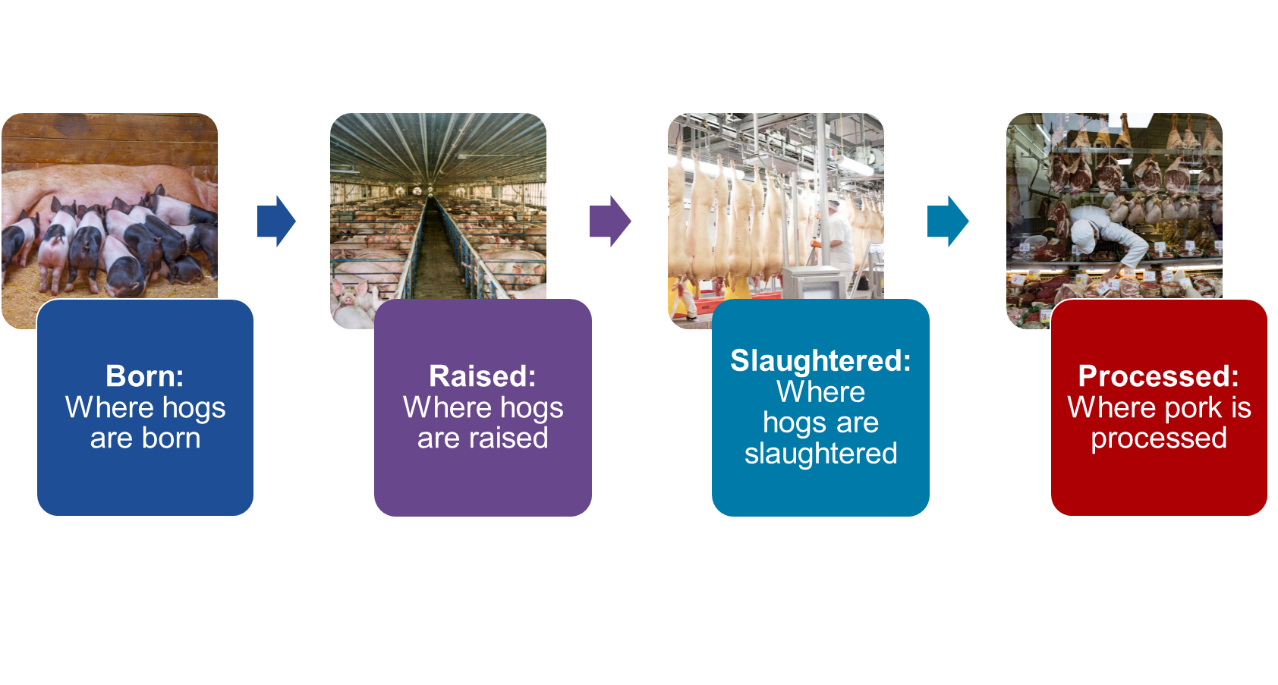
[DISPLAY 11]
For this survey, please consider four possible options for where the pork tenderloin was produced as described below. If a production stage is not stated, it means the animals could come from the USA or another country or countries.
“Processed in the USA” means the pork tenderloin was packaged in the USA or cut and then packaged in the USA.
The pork tenderloin was processed in the USA.
The pork tenderloin was made from hogs that were slaughtered and the meat then processed all within the USA.
The pork tenderloin was made from hogs that were raised and slaughtered and the meat then processed all within the USA.
The pork tenderloin was made from hogs that were born, raised, and slaughtered and the meat then processed all within the USA.
[DISPLAY 12]
It is important that we get accurate results to the survey. In prior surveys, some respondents did not consider their answers to these questions carefully. For example, in one survey, most respondents said they would buy a new product. However, when a grocery store stocked the product, only about half actually bought the new product when they had to pay for it with their own money. This can lead to misleading survey results. So, it is important that you make each of your upcoming choices like you would if you were actually making these exact choices in a grocery store/butcher or online.
Practice DCE
[DISPLAY 12A]
To start, consider Product A and Product B. Please assume they are the brand that you usually buy. Both products are packages of USDA-inspected pork tenderloin that are not in a marinade and have the same weight and expiration (sell-by) date and the same general appearance. The products are the same except for the labeling features shown on the next screen. Please carefully consider each product.
[DISPLAY 12B]
Product Features |
Product A |
Product B |
Price/pound |
$2.89 |
$5.19 |
Free from added hormones |
No |
No |
Lean |
Yes |
Yes |
Location produced |
In the USA
|
In the USA
|
[SP]
[Prompt if Refused]
DCE_P. Given these two options, which package of pork tenderloin would you buy?
Product A
Product B
Neither
[If DCE_P = Product A, then display]
[DISPLAY 13A]
In this question, each product was exactly the same except Product A cost less than Product B. You chose Product A, the option that cost less.
In the following questions, products will differ in more than one way. Please look very carefully at each product and consider which option you would actually buy as if you were making the purchases using your own money.
[If DCE_P = Neither or Product B]
DCE_N. Why did you choose [Pipe in answer: Product B/Neither] as your response?
[TEXT BOX]
[If DCE_P = Product B, then display]
[DISPLAY 13B]
Please read these questions carefully. In this question, each product was exactly the same except Product A cost less than Product B. However, you chose Product B, the option that cost more.
In the following questions, products will differ in more than one way. Please look very carefully at each product and consider which option you would actually buy as if you were making the purchases using your own money.
[If DCE_P = Neither]
Please look very carefully at each product and consider which option you would actually buy as if you were making the purchases using your own money.
DCE Questions
DCE_1 through DCE_9 [Programming note: Each respondent will see nine DCE questions according to an experimental design. Each question will resemble the question below. Following DCE best practices, the order of attributes will be randomized.]
[Prompt if Refused for DCE1]
Product Features |
Product A |
Product B |
Price/pound |
|
|
Free from added hormones |
|
|
Lean |
|
|
Location produced |
|
|
Given these two options, which package of pork tenderloin would you buy?
Product A
Product B
Neither
[DISPLAY 14]
The next questions ask about how important the different features of pork tenderloin are to you. Please think about how you made your decision to choose either Product A, Product B, or neither product for the questions you just answered.
[SP, randomize response options]
[Prompt if Refused]
DCE_15a. When making your choices, which feature of pork tenderloin was most important to you when deciding which product to buy?
Lean
Free from added hormones
Location produced
Price
[SP]
DCE_15b. Which feature of pork tenderloin was second most important when deciding which product to buy? (Note: Response that was first most important will not be shown.)
Lean
Free from added hormones
Location produced
Price
[SP]
DCE_15c. Which feature of pork tenderloin was third most important when deciding which product to buy? (Note: Responses that were first and second most important will not be shown.)
Lean
Free from added hormones
Location produced
Price
[SP FOR EACH ROW; RANDOMIZE ORDER]
DCE_16. When grocery shopping (at a store or online), how often do you look for the following labeling claims when buying pork tenderloin?
Format using slider
Variable Name |
Labeling Claim |
Never Seen the Claim |
Never |
Rarely |
Sometimes |
Most of the Time |
Always |
DCE_16a |
Lean |
|
|
|
|
|
|
DCE_16b |
Free from added hormones |
|
|
|
|
|
|
DCE_16c |
Product of USA |
|
|
|
|
|
|
SD3. [OPEN TEXT FIELD] Thank you for completing the survey! Please provide any other comments in the box below.
END. You have finished the survey. We have successfully received your responses.
1 Question numbers are not sequential because some questions were deleted after the cognitive interviews.
| File Type | application/vnd.openxmlformats-officedocument.wordprocessingml.document |
| Author | Cates, Sheryl |
| File Modified | 0000-00-00 |
| File Created | 2022-07-18 |
© 2025 OMB.report | Privacy Policy
